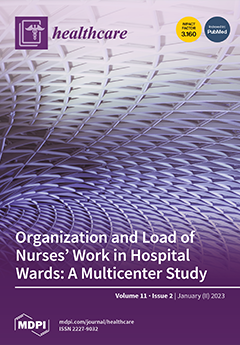Background: Cancellations of elective surgeries adversely affect the patient, hospital staff, facility, and health system. Cancellations potentially result in hospital financial losses, theatre inefficiency, and substandard patient care. A common benchmark for the cancellation rate of elective surgeries is less than five percent,
[...] Read more.
Background: Cancellations of elective surgeries adversely affect the patient, hospital staff, facility, and health system. Cancellations potentially result in hospital financial losses, theatre inefficiency, and substandard patient care. A common benchmark for the cancellation rate of elective surgeries is less than five percent, and most operating rooms fall short of this standard. There is a paucity of data on the rates and causes of elective surgical cancellations in rural, resource-limited settings. This study aimed to determine the prevalence of elective surgery cancellations, the causes for such cancellations, and the surgical disciplines most affected at Nelson Mandela Academic Hospital (NMAH).
Methodology: This was an observational, descriptive, cross-sectional review of operating theatre records from January 2019 to July 2019. The prevalence and main causes of elective case cancellations were determined. The causes were classified, and the most affected surgical departments and patient characteristics were identified.
Results: The prevalence of elective surgical case cancellations was 14.4% in our hospital, higher than the international benchmark of 5%. Patient-, facility-, and surgical-related factors were the leading causes of cancellations, and avoidable cancellations were mostly surgical- and anaesthetic-related. Ophthalmology was the most affected, followed by gynaecology and general surgery, with plastic surgery being the least affected. The most common patient-related factors were nonattendance and uncontrolled medical conditions, while overbooking was the most common surgical reason. Abnormal investigatory results and unfit status were the most common anaesthetic reasons. Facility-related issues included the lack of theatre time, equipment scarcity or malfunction, and staff unavailability. Most cancellations were unavoidable, but with careful planning, could be avoided.
Conclusion and recommendations: This study identified challenges with theatre efficiency in a rural, resource-limited setting that call for the cooperation of multidisciplinary teams of surgeons, anaesthetists, nursing staff, and health care policymakers.
Full article






